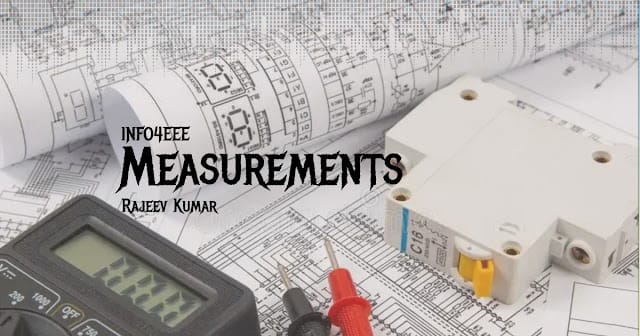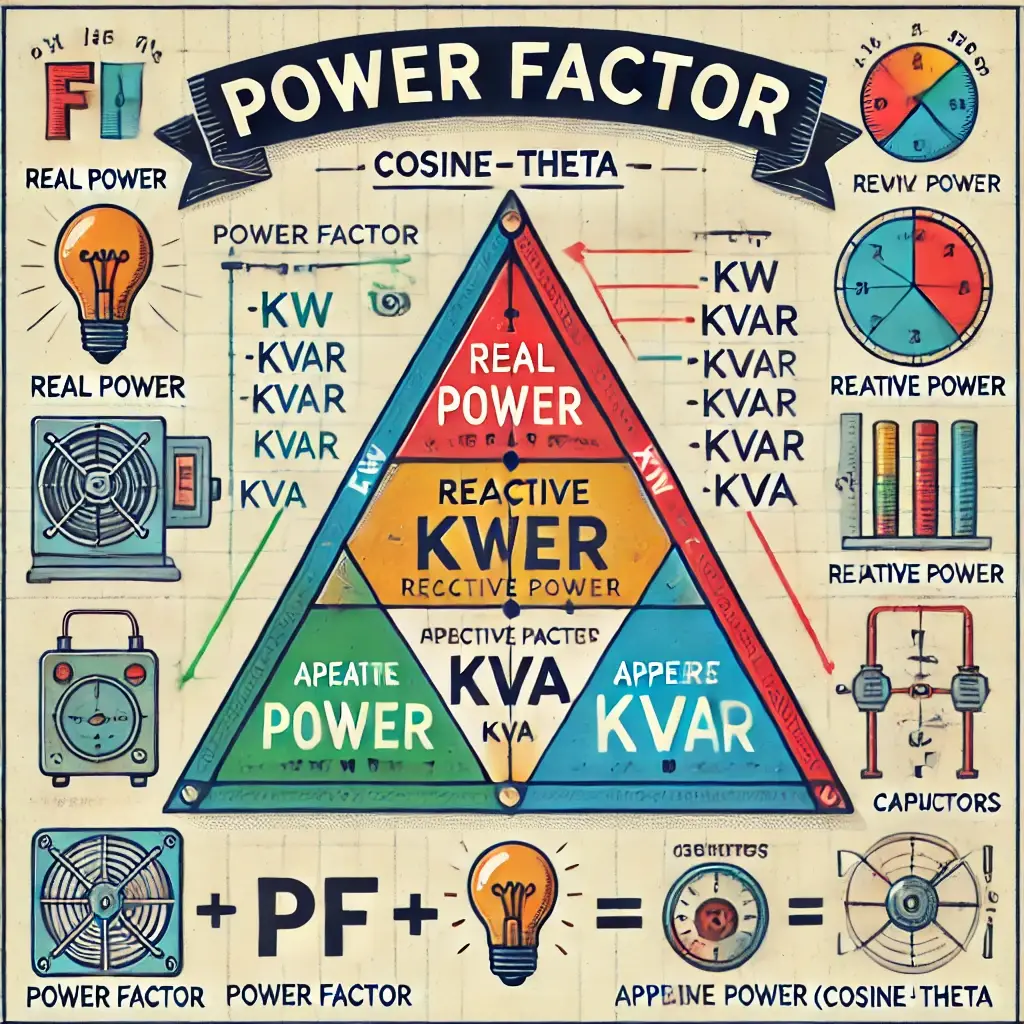Table of Contents
What are Measuring Instruments?
Measuring instruments are the tools that help us see and understand what’s happening inside an electric circuit. They show us things we can’t see with our eyes – like how much current is flowing or how much voltage is present.
Now let’s understand their types.
Types of Measuring Instruments
There are mainly three types of measuring instruments:
- Electrical Measuring Instruments
- Mechanical Measuring Instruments
- Electronic Measuring Instruments
But here, we are mainly talking about electrical measuring instruments, so let’s understand them in a very simple way.
What Are Electrical Measuring Instruments?
Electrical measuring instruments are tools that help us measure things like voltage, current, power, and power factor. These are very common in homes, schools, factories, and everywhere electricity is used.
For example:
- If you want to know how much voltage is coming from a battery, you use a voltmeter.
- If you want to check how much current is flowing in a wire, you use an ammeter.
- If you want to find out how much power is being used, you use a wattmeter.
All these tools help us understand what is going on in an electrical system.
How Do They Work?
Most analog electrical instruments (the old-style ones with a needle) work using a mechanical system. This means they have small moving parts inside. These parts move when electricity passes through them.
But since moving parts take a little time to respond, these instruments may show a reading a little slowly. This is because of something called inertia, which simply means that moving things take time to start and stop.
So, while these instruments are helpful, they are not super fast.
Electrical Measuring Instruments
Whenever someone steps into an electrical engineering lab to do even the simplest experiment, they will definitely come across three main instruments:
Ammeter, Voltmeter, and Wattmeter.
These are the basic tools used to measure current, voltage, and power. Before using them, it’s always helpful to first understand how they work. Knowing this will make it easier to handle them correctly and avoid mistakes.
Absolute Instruments
Absolute instruments are special measuring tools that can directly show the value of a quantity, like current or voltage, without needing to compare it with any other standard instrument. This means they do not need calibration.
In simple words, these instruments give you the correct answer all by themselves, just by using their own design and parts.
They work based on some fixed physical rules and constants, and their readings come from how much the needle or pointer moves (this is called deflection). That deflection, along with known parts of the instrument (like length, resistance, or coil turns), tells us the exact value of what we are measuring.
You don’t need another instrument to double-check it. That’s why they are called absolute — they stand alone and are complete in themselves.
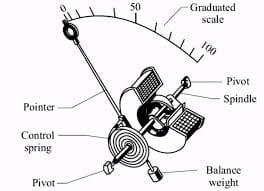
Examples of Absolute Instruments:
- Rayleigh Current Bridge – Used to measure small electric currents accurately.
- Tangent Galvanometer – Measures electric current using the deflection of a magnetic needle.
Why Use Absolute Instruments?
- They are self-reliable.
- No need for recalibration.
- They help in creating standard measurements.
However, they are mostly used in laboratories or experiments — not commonly used in day-to-day work, because they are usually slower and more complex than regular (secondary) instruments.
In short, absolute instruments are like teachers who give the correct marks without needing an answer sheet to check — they already know the rules.
Secondary Instruments
Secondary instruments are special tools that help us measure things like electric current or voltage. But here’s something important — these instruments cannot work all by themselves. They must be checked and set using a standard or main instrument first. This is called calibration.
Think of it like this: Imagine you’re using a weighing machine to measure your weight. If the machine is not set properly, it will show the wrong number. In the same way, secondary instruments need to be set correctly with a trusted instrument before we use them.
Some common examples of secondary instruments are:
- Moving Iron Instruments
- Moving Coil Instruments
- Electrodynamic Instruments
These instruments are useful, but only when we make sure they are calibrated properly. Once they are set, they can give us accurate measurements of unknown values.
Indicating Instruments
Indicating instruments are special tools that help us see or know the value of something we are measuring — but only at that exact moment.
For example, if you are checking the current in a wire, an ammeter will tell you how much current is flowing right now. If you are checking voltage, a voltmeter will show the voltage at that instant. These readings are not stored — they are just for that one moment.
Some common examples of indicating instruments are:
- Ammeter – shows how much current is flowing
- Voltmeter – shows how much voltage is there
- Wattmeter – shows how much power is being used
How Do These Instruments Work?
Most indicating instruments have a pointer (like a needle) that moves on a scale to show the value.
For the pointer to move correctly and stop at the right place, three main types of forces (we call them “torques”) are needed:
1. Deflecting Torque (Td)
This is the force that makes the pointer move.
When we connect the instrument to a circuit, this torque pushes the pointer forward to show the value.
What is Deflecting Torque?
Deflecting torque is the force that makes the needle or pointer of a measuring instrument move.
Imagine you are using a speedometer or a voltmeter. When there is no electricity or signal, the needle stays at zero. But as soon as you start measuring something, the needle moves. That force which pushes the needle away from zero is called deflecting torque.
This torque is not random. It moves the needle only as much as needed, based on the value of what you’re measuring — like voltage, current, or power. The stronger the signal, the more the needle moves.
The way this torque is created depends on the type of instrument you are using. Some common types include:
- Moving Iron Type
- Moving Coil Type
- Dynamometer Type
Each of these uses a different method to produce the deflecting torque, but the goal is always the same — to move the pointer and show the correct reading.
2. Controlling or Restoring Torque (Tc)
This torque pulls the pointer back and keeps it from moving too far.
It helps the pointer stop at the correct spot and come back to zero when the circuit is off.
What is Controlling Torque?
When we use measuring instruments like an ammeter or voltmeter, a small needle moves to show us the value. But have you ever wondered how that needle knows where to stop? That’s where controlling torque comes in.
Controlling torque is like a helper that keeps the pointer in control. It works against the force that tries to move the needle too much. This way, the needle doesn’t just swing wildly—it moves only as much as needed, and stops at the correct spot.
If we didn’t have controlling torque, the needle would move too far, even if the value is small. And worse, after turning off the electricity, the needle wouldn’t come back to zero. It would just stay there, stuck.
That’s why controlling torque is very important. It makes sure the needle only moves the right amount and always comes back to zero when power is off.
There are two common ways to create controlling torque:
- Spring Control – A small spring pulls the needle back gently.
- Gravity Control – Gravity helps bring the needle back down using a tiny weight.
In short, controlling torque keeps everything balanced and working properly, just like a traffic signal keeps vehicles in order.
3. Damping Torque
This torque helps the pointer settle down smoothly.
Without it, the pointer would swing back and forth before stopping. Damping makes the movement soft and quick.
Damping Torque – Simple Explanation
When we use measuring instruments like ammeters or voltmeters, there’s a small pointer that moves to show the reading. But when this pointer moves to its final position, it doesn’t always stop there right away. Without control, it can swing back and forth like a pendulum. This swinging is called oscillation.
To stop this, we use something called damping torque.
What does damping torque do?
Damping torque helps the pointer settle down quickly without shaking. It controls the movement and makes the pointer stop smoothly at the correct place.
Imagine you’re pushing a swing. If you want the swing to stop, you gently hold it and let it slow down. That’s what damping torque does—it holds back the pointer just enough to stop it from moving too much.
When does damping torque work?
It works only when the pointer is moving. It fights against the pointer’s motion and helps it stop at the right spot.
Types of Damping:
Based on how strong the damping is, it can be of three types:
- Underdamped – The pointer still shakes a little before stopping.
- Overdamped – The pointer moves very slowly and takes time to reach the final spot.
- Critically damped – The pointer moves smoothly and stops quickly without shaking. This is the best type.
How do we create damping torque?
We can create it in three simple ways:
- Air Friction (Pneumatic Damping): Using air to slow down the motion.
- Fluid Friction Damping: Using a thick liquid to resist movement.
- Eddy Current Damping (Electromagnetic): Using magnetic force to gently stop the pointer.
When Everything is Balanced
When all three torques are working together in balance, the pointer reaches a steady point and stays there.
This point is the correct reading of the quantity being measured — like the actual voltage, current, or power at that moment.
Recording Instruments
Recording instruments are special tools that don’t just show us a value at one moment. They also keep a record of how that value changes over time.
Imagine you are checking your heartbeat. A doctor doesn’t just want to know what your heartbeat is right now—he also wants to see how it has been changing. That’s where these instruments help.
They write down or draw a graph of the values as time passes. This helps us understand what happened earlier, what’s happening now, and maybe what might happen next.
Some examples of recording instruments are:
- Cardiogram – It records how your heart beats over time.
- X-Y Plotter – It draws graphs to show how two things change together.
- Strip Chart Recorder – It makes a line on a moving paper strip to show changes.
- Storage Oscilloscope – It shows and saves fast-changing electrical signals.
- Data Logger – It collects and stores data automatically over time.
These instruments are very useful in science, hospitals, factories, and many other places where we need to keep track of things and study how they change.
Integrating Instruments
Integrating instruments are special tools that don’t just show you a number right away — they keep adding up the value they are measuring over a period of time.
You can think of them like a counting jar. Every time something happens, they add it to the total. Then, after some time, you can look at the jar and see how much has happened altogether.
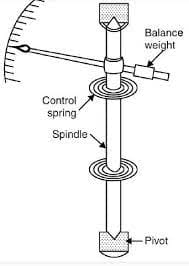
🔍 What do they measure?
They measure and collect things like:
- How much electricity you have used in your home
- How far a car has travelled
- How much water has been used
They don’t measure instantly — they measure slowly, over time.
🧠 Simple Example:
Think about an energy meter in your house. It doesn’t just show how much power is being used right now. Instead, it keeps adding up all the electricity used — hour after hour, day after day. That way, at the end of the month, you can see how much electricity you’ve used in total.
Another example is an odometer in a car. It adds up all the kilometres you drive. Even if you switch off the car and come back later, the number stays — because it’s always adding.
✅ In short:
- Integrating instruments collect and add values over time.
- They help us know the total of something after a while.
- Examples: Energy meter, Odometer, Water meter
Null Type Instruments
In the world of electrical measuring instruments, there are two main types: deflection type and null type. Today, let’s understand null type instruments in a very simple and natural way.
🤔 What Are Null Type Instruments?
Null type instruments work differently from deflection type instruments.
- In deflection type, the pointer moves when it measures something.
- But in null type, the pointer does not move. It stays still by creating an equal and opposite effect. This opposite force balances the unknown quantity.
🔍 How Do Null Type Instruments Work?
To make a null type instrument work, we need to follow three easy steps:
- Know the Opposite Effect
We must know the value of the force or effect we’re using to balance the unknown quantity. - Use a Detector
The detector tells us whether things are balanced or not. If there is balance, the pointer doesn’t move. If not, it shows us how much we need to adjust. - Have a Restoring Force
The instrument should have a way to bring things back to balance if they go off.
Advantages and ❌ Disadvantages
Let’s compare deflection type and null type instruments in a simple way:
Advantages of Null Type Instruments:
- More Accurate: Null type instruments give more accurate results because we balance known and unknown values directly.
- More Sensitive: They can detect even very small changes easily.
Disadvantages of Null Type Instruments:
- Slower Response: These instruments are slower, so they are not the best for fast or changing conditions.
Advantages of Deflection Type Instruments:
- Faster: These are better when things change quickly because they react faster.
Disadvantages of Deflection Type Instruments:
- Less Accurate: Their results depend on built-in values, which might not always be perfect.
🎯 The 3 Main Jobs of Measuring Instruments
Every electrical measuring instrument, whether null or deflection type, has to do these 3 important things:
- Detect – Find the value or change.
- Display – Show the result clearly.
- Control – Help control or balance the measured quantity.
Controlling Function
In the world of industries, the controlling function plays a very important role.
This function is used to control machines and processes so everything works smoothly and safely. Special instruments are used in this function. These instruments help in managing, checking, and adjusting different processes on time.
Now, let’s understand two important qualities of electrical measuring instruments. These are called characteristics.
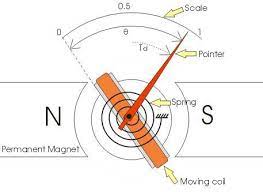
1. Static Characteristics
Static means something that does not change much with time. So, static characteristics are those qualities of instruments that are useful when the values are steady or change very slowly.
Here are the main static characteristics:
✅ Accuracy
- Accuracy means how close the reading of the instrument is to the real value.
- The more accurate the instrument is, the better it is.
- Accuracy can be shown in 3 ways:
- Point accuracy – Accuracy at one point.
- Percentage of full scale – How accurate it is across the whole measuring scale.
- Percentage of true value – How close it is to the actual correct value.
✅ Sensitivity
- Sensitivity tells us how well the instrument reacts to a small change.
- If the input changes a little, and the output shows that change clearly, then the instrument is sensitive.
- High sensitivity means the instrument is quick and sharp in response.
✅ Reproducibility
- Reproducibility means the ability to get the same result again and again when you measure the same thing.
- If the instrument gives almost the same reading every time, it is very reliable.
- Less difference means less drift. There are 3 types of drift:
- Zero drift – When the zero point shifts.
- Span drift – When the entire scale shifts.
- Zonal drift – When the shift happens in part of the scale.
2. Dynamic Characteristics
Dynamic means something that is always changing, especially quickly.
So, dynamic characteristics help us understand how the instrument behaves when the value changes rapidly.
To understand dynamic characteristics, we look at the relationship between input and output.
For example:
If the input value suddenly goes up, how fast and how correctly the output responds—that’s what we study here.
FAQ
I am an Electrical Engineer with qualifications in ITI, Diploma, and B.Tech. I have worked as an ITI college instructor for 3 years and have over 5 years of hands-on experience in the electrical field. The information shared on this website is based on trusted electrical engineering textbooks such as P.S. Bimbhra, B.L. Theraja, V.K. Mehta, and real-world practical experience.

